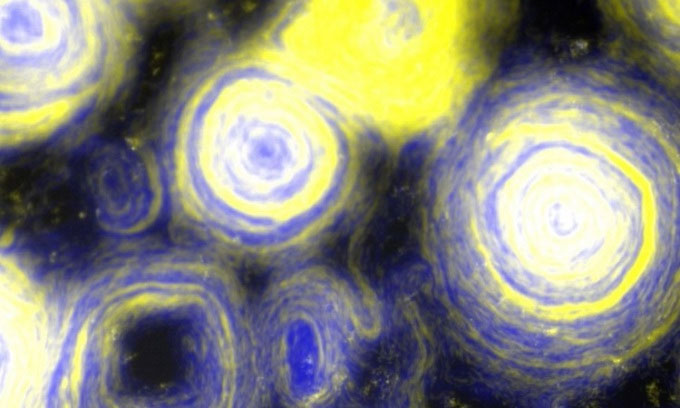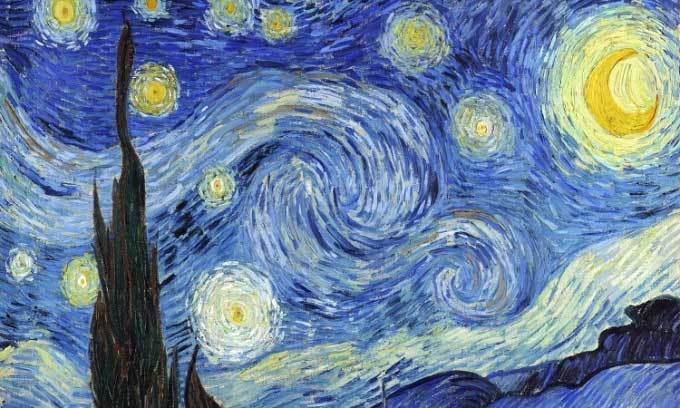Found mutated bacteria like Van Gogh paintings
The swarm of flesh-eating bacteria clings to each other in a vortex with yellow and green colors similar to the painting 'Starry Night' by Dutch artist Vincent van Gogh.

The mutant bacteria magnify under the microscope.
Microbiologists discovered many similarities between the bacterial colony and the famous picture when studying the cooperative behavior of the flesh-eating bacteria Myxococcus xanthus. Individuals of this species are known for their ability to form cooperative swarms, sharing resources to overwhelm their prey. The team paid particular attention to the TraA and TraB protein pairs, which allow the bacteria to recognize and associate with each other. To do this, they created a mutant strain of M. xanthus that overexpresses the genes behind these proteins to see how they change, according to the study, published Dec. 7 in the journal mSystems.
When the mutant strains swarmed with other mutants and non-mutants, many clumps of cells form a vortex. The team then used digital technology to add additional colors to distinguish each strain. After adding color, they noticed that the colony of bacteria looked a lot like 19th century artist Van Gogh's "Starry Night," with yellow and blue textures. Through the discovery, studying social bacteria helps reveal "artistic behavior," said Daniel Wall, a molecular biologist at the University of Wyoming.

The painting "Starry Night by Van Gogh.
Individual M. xanthus form cooperative flocks by sharing enzymes (proteins) and metabolites, which help convert food into energy by promoting metabolic reactions. As a result, the bacteria can overwhelm the prey of other bacterial species. Normally, these swarms are composed of many long lines of cells, like passenger ships, according to Oleg Igoshin, a computer biologist at Rice University in Texas. However, the lab-created mutation causes the colonies of bacteria to cling to each other in vortexes, each one millimeter or more in diameter.
Overexpression of TraA and TraB also induces stronger binding, meaning colonies of bacteria stick together for longer and are unlikely to be transformed back into individual cells.
- Mysterious sunflowers in Van Gogh paintings
- Grasshoppers stuck 128 years in Van Gogh paintings
- Van Gogh's paintings were discolored because of ultraviolet rays
- Admire Van Gogh's extremely rare sketches
- Using Van Gogh's 3D printers with human tissue
- Van Gogh's painting is reproduced by 3D technology
- Bacteria protect ancient paintings from bacteria that eat pigments
- Find out how to save Van Gogh's paintings
- Controversy around the episodes of Van Gogh's painting
- New hypothesis about the mysterious death of Van Gogh's artist
- Disease of the great man
- The hundred-year-old painting was suddenly found in Antarctica
 Why do potatoes have eyes?
Why do potatoes have eyes? 'Tragedy' the world's largest carnivorous life: Death becomes ... public toilet
'Tragedy' the world's largest carnivorous life: Death becomes ... public toilet Tomatoes were once considered 'poisonous' for 200 years
Tomatoes were once considered 'poisonous' for 200 years Detecting microscopic parasites on human face
Detecting microscopic parasites on human face